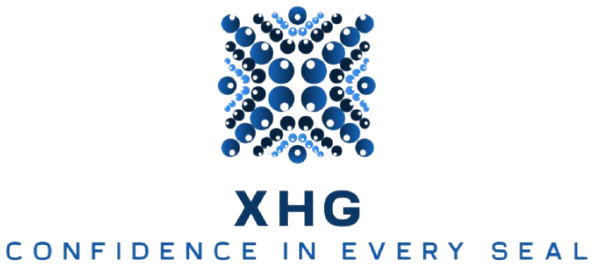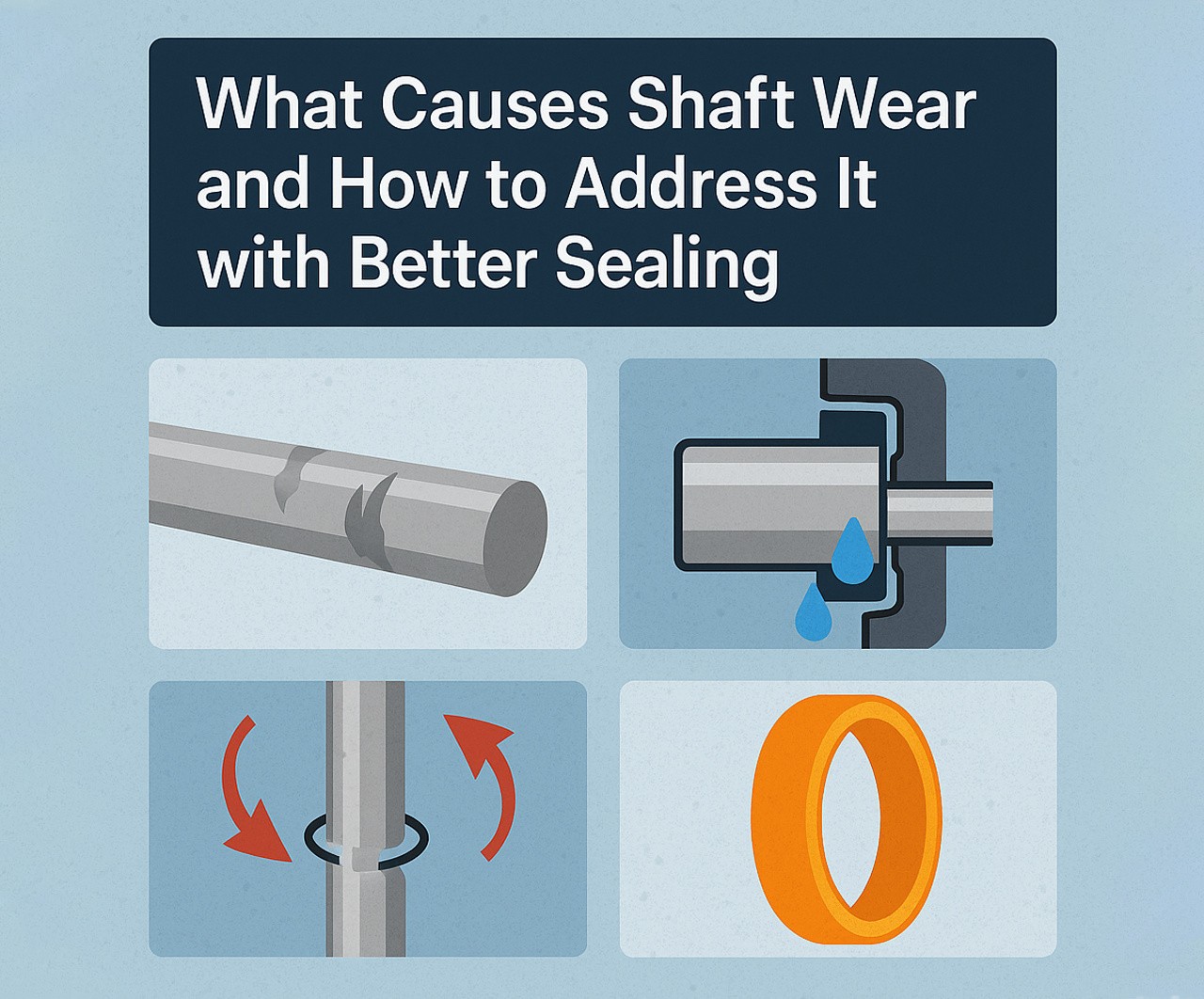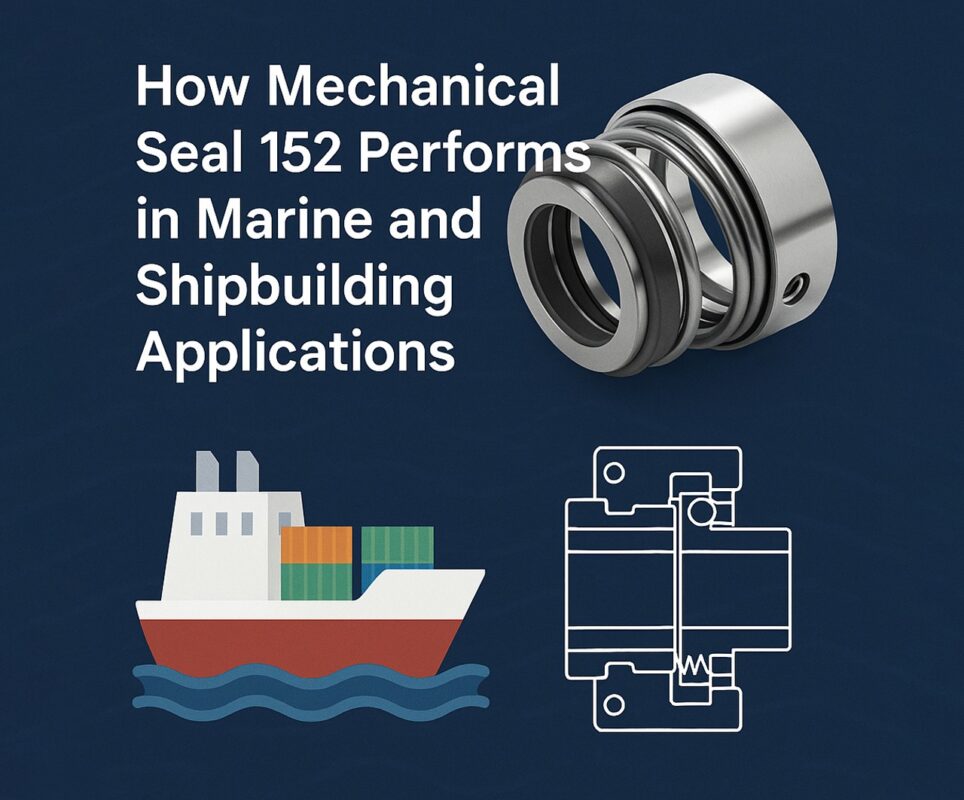In any industrial system involving rotating components, shaft wear is one of the most common and costly problems. Whether you’re working with a mechanical oil seal, maintaining an oil pump mechanical seal, or troubleshooting an oil seal high vacuum pump, managing shaft wear is essential to prolonging equipment life, reducing downtime, and ensuring operational efficiency. Shaft wear doesn’t happen overnight—but left unchecked, it can lead to premature failure, increased energy consumption, and even catastrophic breakdowns. In this article, we’ll explore the causes of shaft wear and how better sealing strategies can make all the difference. Know more..
What Is Shaft Wear?
Shaft wear refers to the gradual deterioration of a rotating shaft’s surface due to mechanical friction, fluid erosion, chemical corrosion, or thermal stress. It typically occurs at the contact points between the shaft and components like seals, bearings, or bushings.
Symptoms of shaft wear include:
- Surface pitting or grooving
- Shaft misalignment
- Vibration or noise during operation
- Leaks at seal interfaces
When a mechanical oil seal or an oil pump mechanical seal fails to perform, the shaft becomes vulnerable to direct exposure, increasing wear exponentially.
Common Causes of Shaft Wear
1. Inadequate Lubrication
Without proper lubrication, friction increases between the shaft and the seal. This generates heat and accelerates wear. In oil seal high vacuum pump applications, maintaining consistent lubricant levels is even more critical due to the sensitivity of vacuum systems.
2. Improper Seal Installation
Misaligned or over-tightened seals can create uneven pressure on the shaft surface. This is especially problematic with mechanical oil seals, which rely on precise alignment to maintain a clean, tight interface.
3. Contamination
Particulate matter, abrasive dust, or chemical contaminants in the operating environment can enter the sealing interface. Once inside, they act like sandpaper—damaging both the shaft and the seal.
4. Thermal Cycling
Fluctuations in temperature cause materials to expand and contract. Over time, this leads to changes in shaft diameter and seal fit, potentially allowing micro-gaps where wear can begin.
5. Improper Material Pairing
Using incompatible seal and shaft materials can lead to galvanic corrosion or excessive abrasion. For example, pairing a soft seal material with a rough, hard shaft finish is a recipe for rapid degradation.
Understanding the Role of Seals in Shaft Protection
Seals play a critical role in preserving shaft integrity. Whether it’s a mechanical oil seal, an oil pump mechanical seal, or a specialized oil seal high vacuum pump, the goal is the same: prevent contaminants from entering and lubricants from escaping.
A high-quality seal:
- Reduces direct shaft contact
- Maintains consistent lubrication
- Compensates for minor shaft misalignments
- Protects against chemical and thermal damage
Types of Seals That Influence Shaft Wear
Mechanical Oil Seal
A radial lip-type seal designed to retain oil or grease and exclude dirt. It usually features a flexible sealing lip that maintains contact with the shaft while allowing for rotation.
Key benefits:
- Simple and economical
- Good for moderate speeds and pressures
- Easy to install and replace
Oil Pump Mechanical Seal
This seal type is typically a dynamic, face-type seal used in rotating pumps. It comprises rotating and stationary elements pressed together by a spring or hydraulic force.
Key benefits:
- Ideal for high-pressure or high-speed conditions
- Handles greater axial and radial loads
- Common in chemical and industrial pumps
Oil Seal High Vacuum Pump
Used in applications where pressure differentials are significant and contamination must be strictly controlled. These seals often use advanced materials and tight tolerances.
Key benefits:
- Minimal gas leakage
- High-temperature and chemical resistance
- Critical in semiconductor, pharmaceutical, and lab systems
Material Considerations for Optimal Sealing
Choosing the right seal material is just as important as selecting the seal type. The interaction between the seal and the shaft must be carefully balanced.
Popular seal materials include:
- Nitrile (NBR): Cost-effective and versatile; suitable for mineral oils.
- Viton (FKM): High chemical and temperature resistance.
- PTFE (Teflon): Extremely low friction; used in oil seal high vacuum pump environments.
- Silicone: Flexible and temperature-tolerant but not ideal for abrasive environments.
Proper material selection ensures compatibility, prevents chemical degradation, and reduces shaft scoring.
Innovations in Seal Technology to Prevent Shaft Wear
Spring-Energized Seals
These seals use a metal spring to maintain consistent pressure against the shaft, ensuring reliable sealing even under variable loads.
Multi-Lip Seals
Incorporating multiple sealing lips enhances protection against contamination and allows separation of fluids (e.g., oil and water).
Smart Seals
Some modern seals feature embedded sensors to monitor pressure, temperature, and wear in real time—ideal for predictive maintenance.
Split Seals
Engineered for quick replacements without dismantling equipment, split seals are ideal in maintenance-heavy environments.
How to Address Shaft Wear Proactively
1. Regular Inspection
Check seals, shafts, and lubrication systems during routine maintenance. Look for signs of wear, such as grooving or oil residue.
2. Use Shaft Sleeves
A shaft sleeve is a replaceable cover that fits over the shaft, acting as a sacrificial layer. It allows you to replace a worn surface without changing the entire shaft.
3. Upgrade Sealing Systems
Investing in a higher-grade oil pump mechanical seal or oil seal high vacuum pump system can yield long-term savings by reducing maintenance frequency.
4. Balance Shaft Loads
Misalignment and vibration increase wear. Use laser alignment tools and dynamic balancing to reduce shaft loading.
5. Choose Correct Surface Finish
The shaft’s finish should neither be too rough (which accelerates wear) nor too smooth (which reduces seal contact). A finish of 10–20 µin Ra is generally ideal.
Case Studies: Real-World Results
Automotive Manufacturing
A tier-one automotive supplier replaced standard nitrile mechanical oil seals with Viton variants and added shaft sleeves. Seal life improved by 60%, and unplanned maintenance events dropped significantly.
Food Processing Plant
An aging oil pump mechanical seal in a dairy processing facility was replaced with a multi-lip, FDA-compliant seal. The result? Increased hygiene compliance and a 40% reduction in seal replacements annually.
Semiconductor Cleanroom
Engineers deployed PTFE-based oil seal high vacuum pump components with integrated sensors. Leak incidents dropped to near zero, and the system ran continuously for 18 months without a single seal change.
Best Practices for Buyers and Maintenance Teams
- Specify shaft and seal dimensions precisely.
- Always use OEM-recommended seal materials.
- Don’t skimp on surface prep—cleanliness matters.
- Replace seals during scheduled downtime, not reactive repairs.
- Track performance to identify wear trends over time.
Conclusion
Shaft wear is inevitable in rotating systems, but it’s not unmanageable. By understanding the causes—whether friction, contamination, or thermal effects—and selecting the right sealing solutions, you can dramatically extend equipment lifespan and cut operational costs. Whether it’s a standard mechanical oil seal, a robust oil pump mechanical seal, or a precision oil seal high vacuum pump, better seals mean better performance.
In today’s fast-paced industrial landscape, small upgrades in sealing technology can deliver big returns. With the right materials, maintenance practices, and engineering insights, your shafts can spin longer, cleaner, and more efficiently than ever before.



